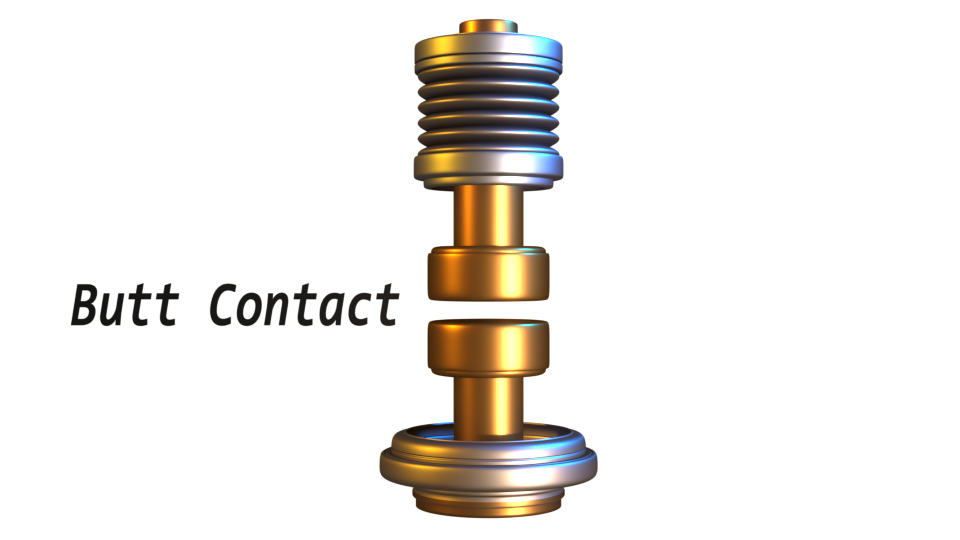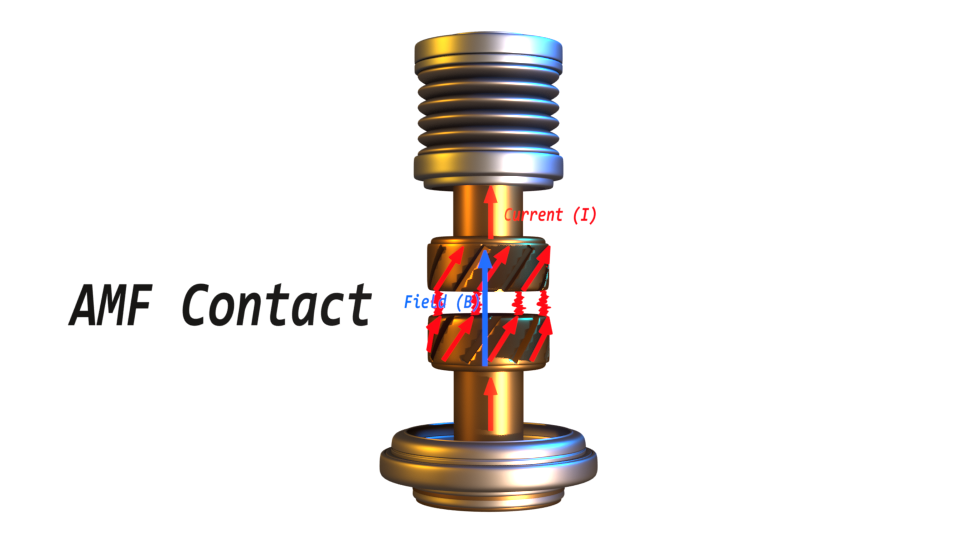The article will focus on the contact design of vacuum interrupters. Before discussing the subject, let us consider why a specific design of contacts is required. The simplest form of contact is the butt-type contact, which has a plain and flat surface. This type of contact is suitable for vacuum circuit breakers with a rated breaking current of 10kA or less, because at such current levels, the arcs formed during circuit breaker operations are relatively weak and tend to distribute more uniformly over the contact surface due to lower magnetic forces.

When the fault current increases, the Lorentz force becomes significantly stronger. Due to the strong Lorentz force, all the unidirectional arc columns come together and form a thick and intense arc column. Because of this concentrated arc, that spot on the contacts erodes faster. As a result, the performance and longevity of the contact reduce. So, to mitigate this localized heating on the contact surfaces, pitching of arcs must be prevented. The concentration of arcs at a single location is known as pitching of arcs. To avoid pitching, mainly two types of contacts for vacuum interrupters have been developed. One is the RMF design, and the other is AMF. The full form of RMF is Radial Magnetic Field, and the full form of AMF is Axial Magnetic Field. Let us discuss them one by one.
Radial Magnetic Field Type Contacts
The contacts are designed in a spiral shape as shown. When current flows through the contacts, it follows a spiral path, forming current loop. At any instant, by applying the right-hand thumb rule to the loop, we can determine the direction of the magnetic field generated by the current loop.
In this configuration, the arc current is predominantly vertical, while the magnetic field is radial (horizontal and outward-directed). That means, the arc current is perpendicular to the magnetic field. Using Fleming’s Left-Hand Rule, we can determine that the force acting on the arc plasma is tangential to the outer edge of the contacts.
This tangential Lorentz force causes the arc to rotate or move along the periphery of the contact surface, resulting in arc dispersion. Therefore, the arc is not concentrated in one spot and remains diffused across the contact surface.
A similar effect can be achieved by cutting deep, inclined, parallel slots into the vertical surface of the contacts. In this case, the inclination of the slots is opposite in the two contacts. This design forces the current to follow the slot teeth paths. Due to the skin effect in AC systems, the current tends to flow along the outer regions of the conductors, thereby following the slotted geometry.

Consequently, the current forms local loop paths within each slot, generating a horizontal, outward-directed magnetic field, similar to that of spiral contacts. The interaction between this magnetic field and the vertical arc current again produces a horizontal tangential Lorentz force. This force ensures that the arc remains spread out, preventing it from concentrating at a single location.
Axial Magnetic Field Type Contacts
In this design, similarly, deep inclined grooves are cut on the outer portions of both contacts. Unlike Radial Magnetic Field type contacts, the inclination of the slots is identical on both contacts. As a result, the current is forced to follow the helical paths defined by the grooves.
If we examine the current path, we observe that it flows in a circular manner in the contacts as shown. This circulating current generates a magnetic field along the axis of the contacts—that is, an axial magnetic field. In this case, the directions of the arc current and the magnetic field are approximately parallel.

As a result of this axial magnetic field, the arc experiences a spinning motion. This rotation helps distribute the arc uniformly over the contact surface, thereby preventing arc concentration at a single point and reducing localized erosion.
Axial magnetic field (AMF)-type contacts are generally more effective than radial magnetic field (RMF)-type contacts in diffusing arcs, especially at higher breaking current levels.
